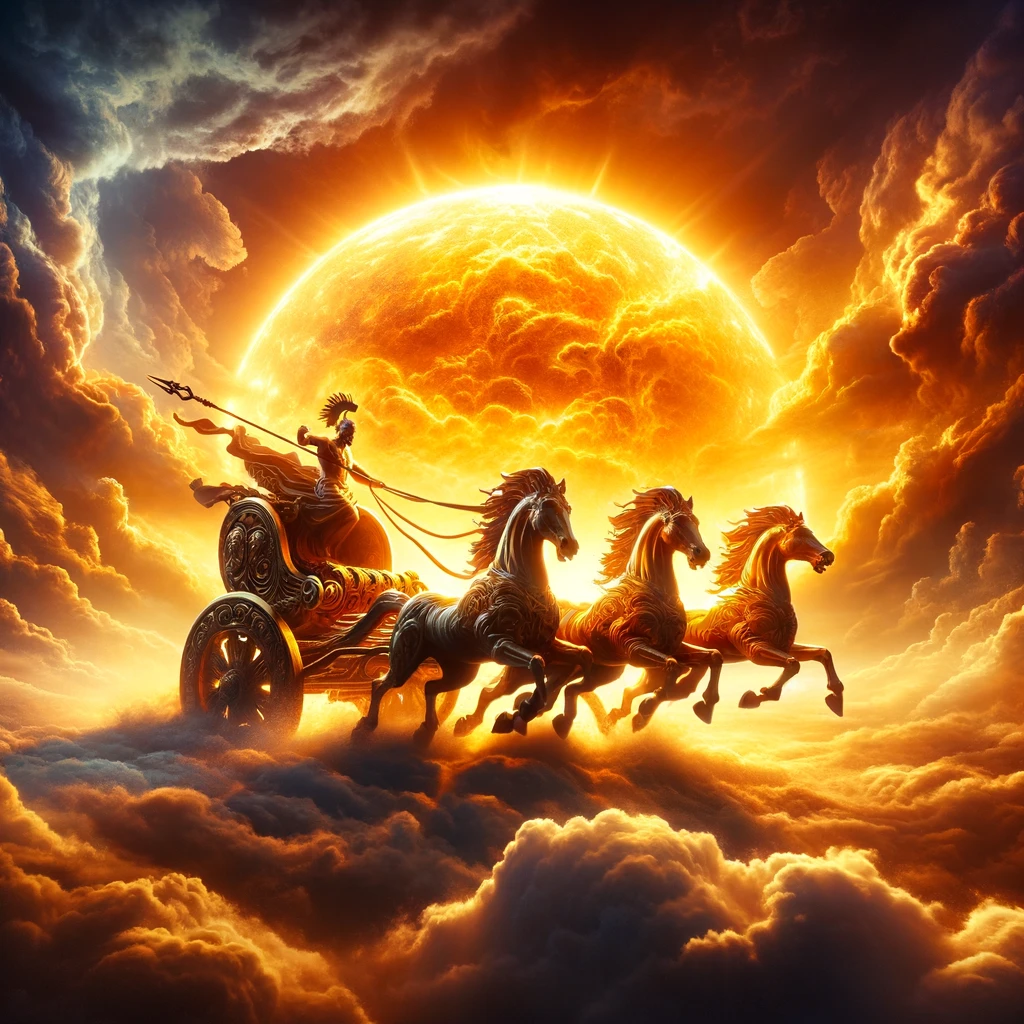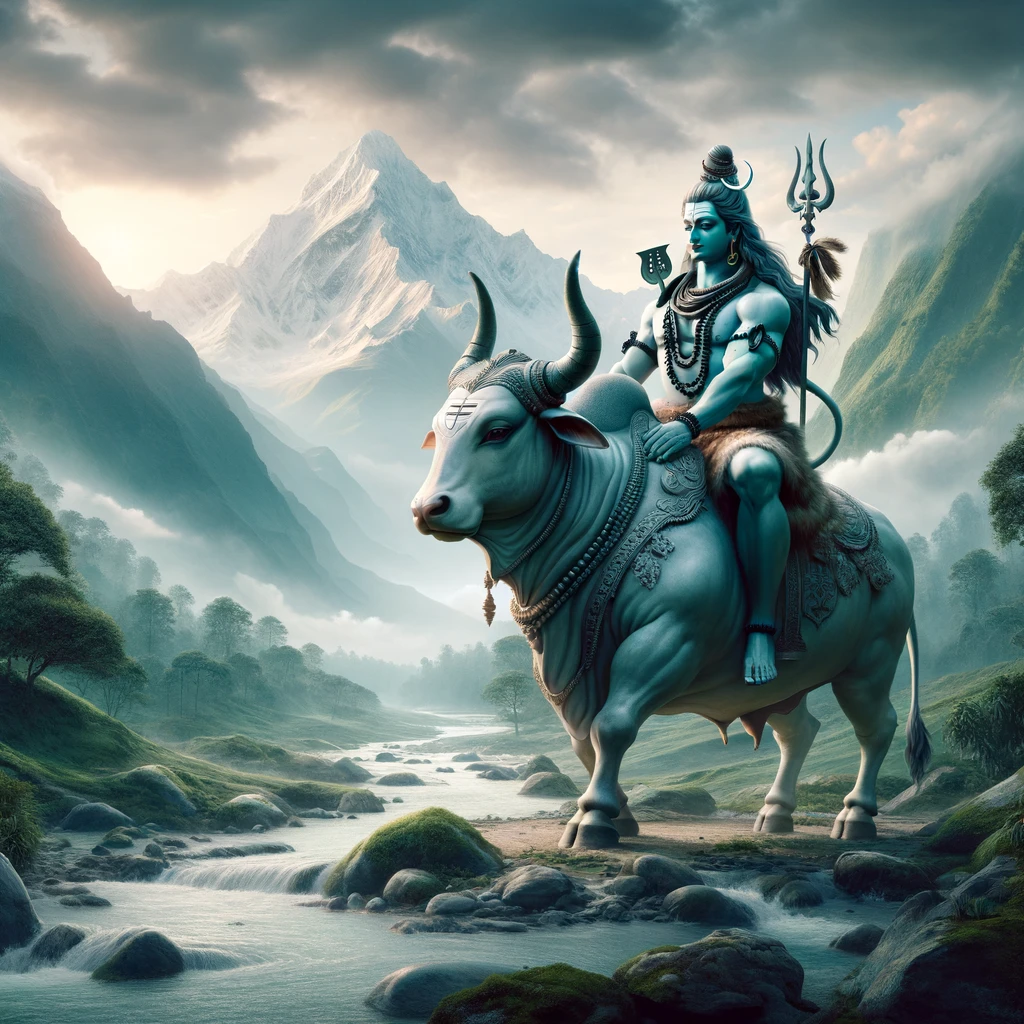Divine Rides in Myths: Hey there, curious soul! Ever wondered why the gods of ancient myths preferred to zoom around on flashy rides? Whether it’s Apollo’s fiery chariot or Lord Shiva’s trusty bull, Nandi, these aren’t just your average means of celestial commute. They’re loaded with symbolism, stories, and a dash of divine swag. Let’s buckle up and dive into the world of divine rides and what they tell us about sacred journeys and symbolism.
Why Do Gods Need Rides?

Think about it: if you had unlimited power, wouldn’t you want a ride that matches your status? But it’s not all about the bling. These rides have layers of meaning, representing the deity’s powers, the cultural values of the time, and even the universe’s mysteries. It’s like picking the perfect outfit but with a lot more at stake.
The Chariot: A Symbol of Solar Power
Imagine the sun god, cruising across the sky in his chariot. This isn’t just about getting from point A to point B. It’s a powerful representation of the sun’s journey, bringing light and life to the world. The chariot’s daily path mirrors our struggles and triumphs, reminding us that every day is a new journey.
Nandi: More Than Just a Bull
Lord Shiva’s ride, Nandi, isn’t just a mode of transportation; he’s a loyal companion. This relationship highlights themes of loyalty, strength, and the sacred bond between the divine and the natural world. It’s a reminder that our journeys are not meant to be traveled alone.

The Role of Divine Rides in Myths
Divine rides in myths are not just for show. They serve as protectors, guides, and symbols of the gods’ power. These sacred vehicles carry deities across realms, battlefields, and the cosmos, emphasizing the importance of their mission and the divine will driving them forward.
A Closer Look at Symbolism
Each ride is a symbol, packed with meaning. For instance, Freya’s chariot pulled by cats signifies her dominion over love and fertility, reflecting the grace and independence of the feline spirit. These symbols teach us about the qualities revered by ancient cultures and the lessons we can learn from the divine.

Conclusion:
And there you have it, a whirlwind tour through the fast and the celestial. Divine rides in mythology are not just about getting from one divine appointment to the next. They’re rich with symbolism, offering us insights into ancient cultures, their values, and how they saw the universe. So next time you come across a mythic god and their trusty steed, take a moment to ponder what it really represents. It might just take you on a journey of your own.
FAQs:
- What’s the coolest divine ride in mythology?
- Personal opinion? Thor’s chariot was pulled by goats. It’s not just cool; it’s lightning-powered!
- Why are animals often chosen as divine rides?
- Animals symbolize various traits – strength, speed, purity – making them perfect representations of divine attributes.
- Do all cultures have myths about divine rides?
- Most do, though the forms and meanings vary widely, reflecting each culture’s unique values and environment.
- How do divine rides compare to modern symbols of status?
- Much like ancient deities, today’s symbols of status (luxury cars, for instance) reflect personal attributes and societal values, though with less emphasis on the sacred.
- Can I learn more about these myths?
- Absolutely! There’s a wealth of books, documentaries, and online resources dedicated to mythology. Dive in, and who knows where the journey will take you?
The reputable sources that provide further insights into mythology, divine vehicles, and related subjects:
General Mythology and Divine Rides:
- Encyclopedia Mythica – An online encyclopedia on mythology, folklore, and religion. It’s a great starting point for general information on various mythologies and their deities.
- Theoi Greek Mythology – Detailed information on Greek gods, goddesses, and their divine vehicles, including Apollo’s chariot.
Specific Divine Rides:
- Norse Myths – Insights into Norse mythology, including Odin’s horse, Sleipnir.
- Ancient History Encyclopedia: Hindu Mythology – Information on Hindu gods and their vahanas, such as Lord Shiva and Nandi.
- Smithsonian Magazine: Sun Chariots – An article exploring the significance of sun chariots in ancient cultures.
Cultural and Symbolic Analysis:
- JSTOR Daily: The Symbolism of Vehicles in Mythology – Academic insights into the symbolism behind mythological vehicles.
- Met Museum: Art of the Ancient World – Artifacts and artworks related to divine vehicles and deities from various cultures.
Modern Interpretations:
- Tor.com: Divine Rides in Modern Fantasy – Discussion on how modern fantasy literature and media reinterpret ancient myths and their divine rides.
Stay tuned for more insights and tips on navigating visit our homepage for more articles.
